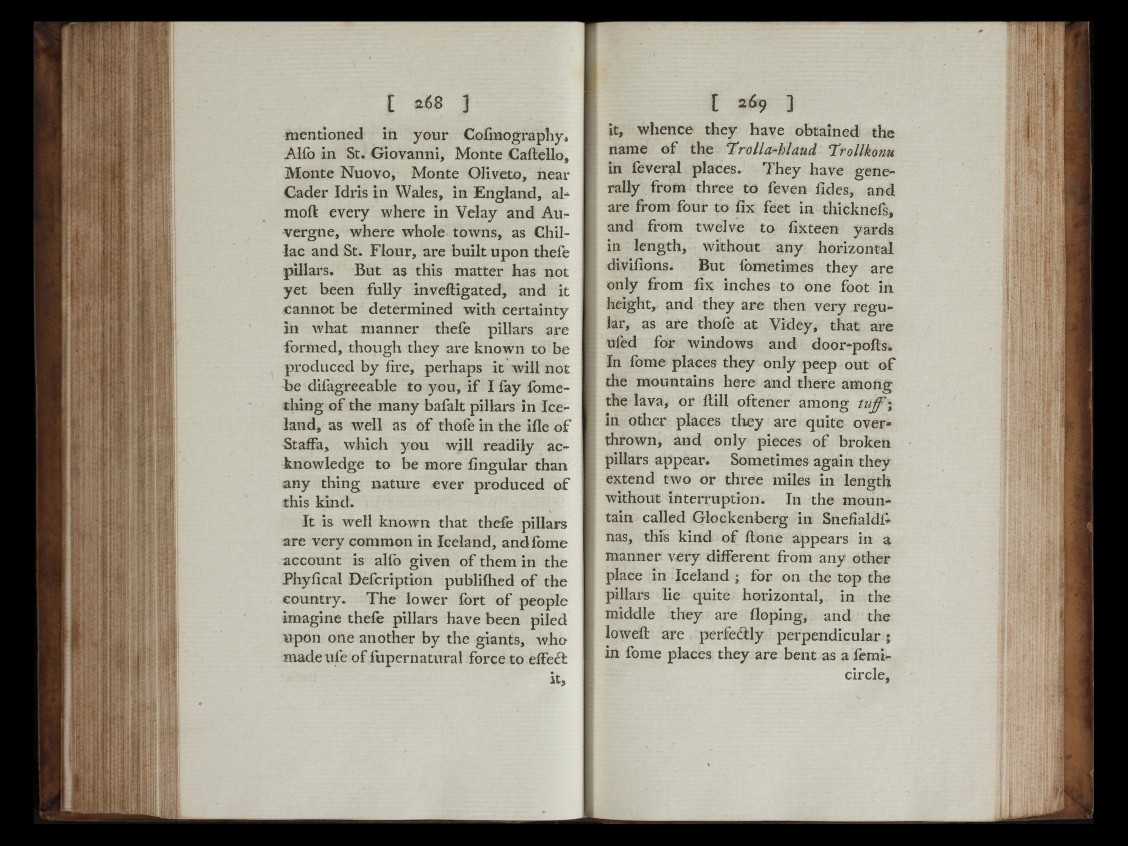
B'íí
■ ■ i: ,
' i ' í
mentioned in your Cofmography*
Alfo in St. Giovanni, Monte Caftello,
Monte Nuovo, Monte Oliveto, near
Cader Idris in Wales, in England, almoil
every where in Velay and Auvergne,
where wliole towns, as Chil-
lac and St. Flour, are built upon thefe
pillars. But a§ this matter has not
yet been fully inveiligated, and it
cannot be determined with certainty
in what manner thefe pillars are
formed, though they are known to be
produced by fire, perhaps it will not
be difagreeable to you, i f I fay fomething
o f the many bafalt pillars in Iceland,
as well as o f thoie in the ifle o f
Staffa, which you will readily acknowledge
to be more lingular than
any thing nature ever produced of
this kind.
It is well known that thefe pillars
are very common in Iceland, and fome
account is alfo given o f them in the
Phyiical Defcription publiflied o f the
country. The lower fort o f people
imagine thefe pillars have been piled
upon one another by the giants, who
made ufe of fupernatural force to eifefl
it.
it, whence they have obtained the
name o f the Trolla-hlaud Trollkonu
in feveral places. They have generally
from three to feven fides, and
are from four to fix feet in thicknefs,
and from twelve to fixteen yards
ill length, without any horizontal
diviiions. But fometimes they are
only from fix inches to one foot in
height, and they are then very regular,
as are thofe at Videy, that are
ufed for windows and door-poils.
In fome places they only peep out o f
the mountains here and there among
the lava, or ilill oftener among tuff-,
in other places tliey are quite overthrown,
and only pieces o f broken
pillars appear. Sometimes again they
extend two or three miles in length
without interruption. In the mountain
called Glockenberg in Snefialdfi-
nas, this kind o f ftone appears in a
manner very different from any other
place in Iceland ; for on the top the
pillars lie quite horizontal, in the
middle they are floping, and the
loweil are perfeélly perpendicular ;
in fome places they are bent as a femicircle,